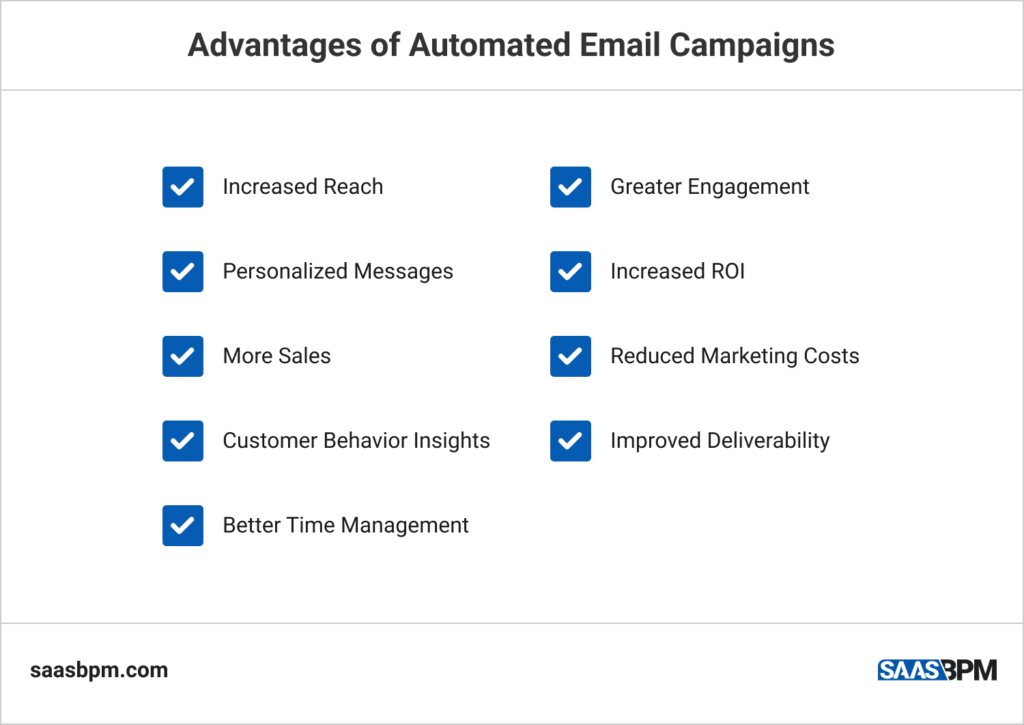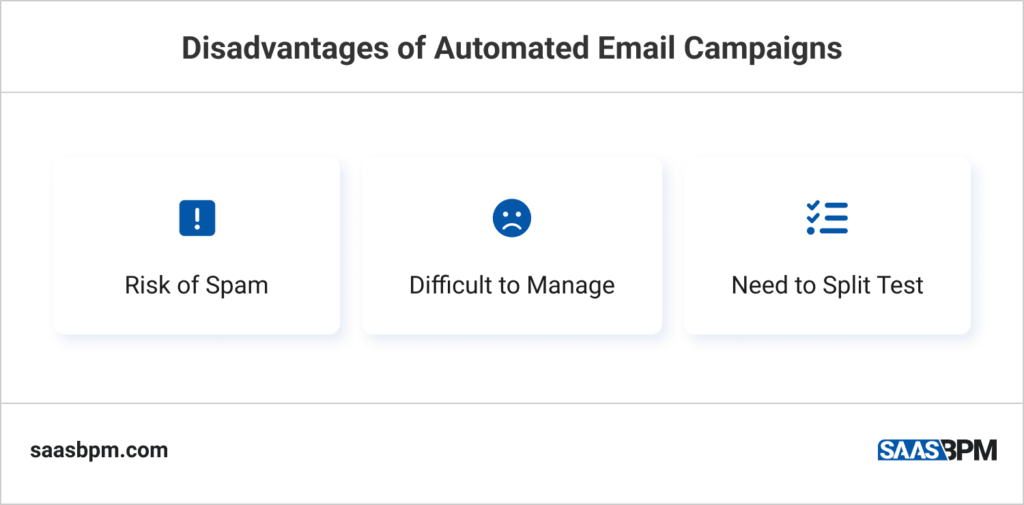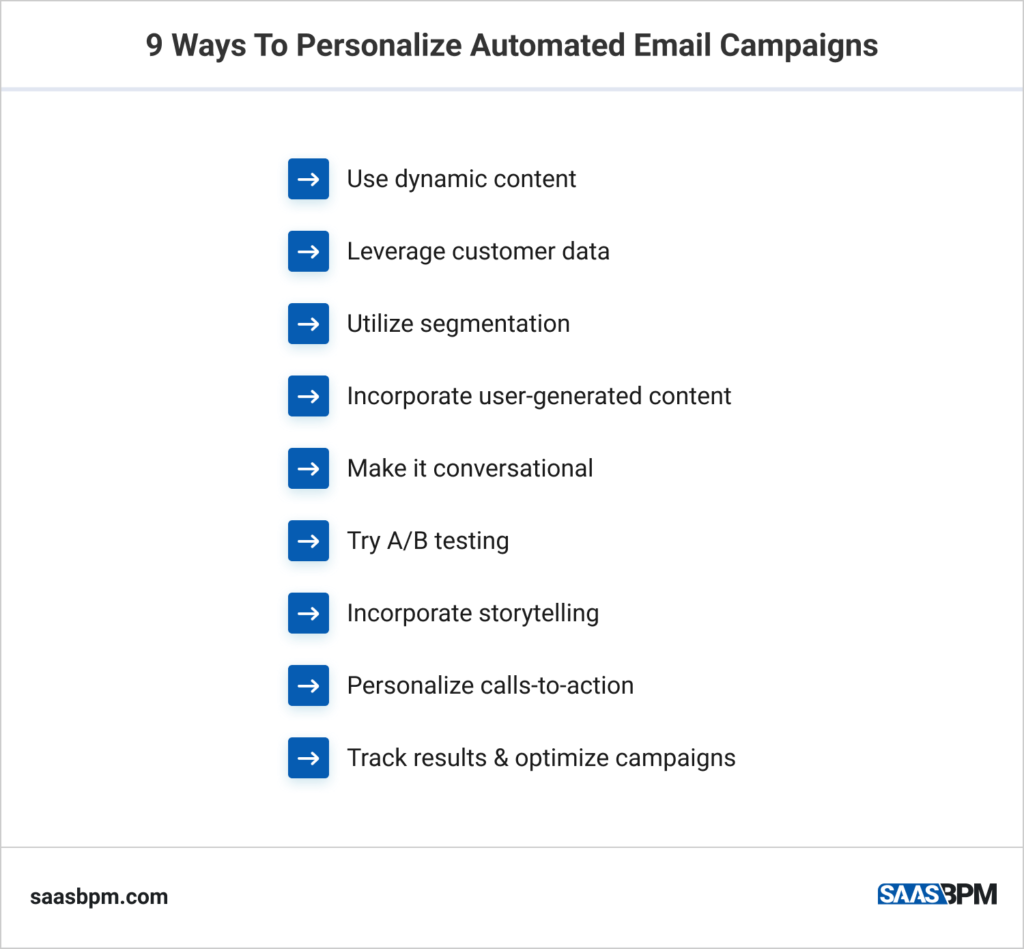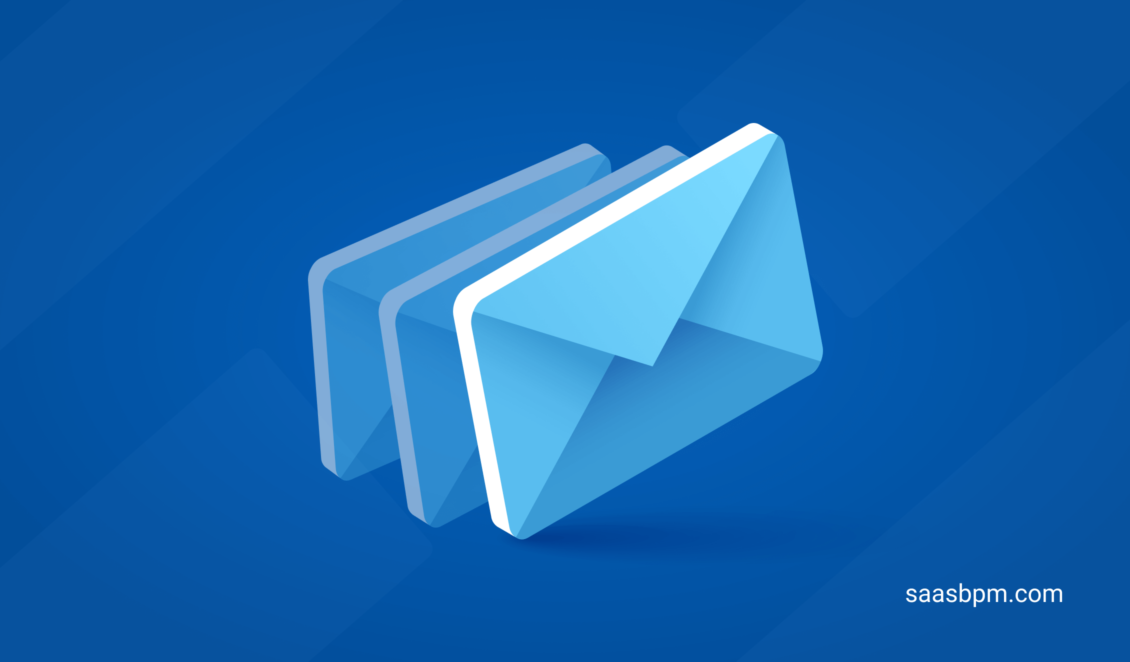Business automation is helpful in many ways. It saves you time on mundane tasks, gives you more hours to plan and strategize, and lets you focus on sales and good customer service. So, if you want to do automated email campaigns and weave your brand personality in, there are certain clever steps to do it.
For starters, try to divide the prospects that need your immediate attention. They would be the group most likely to convert. Then, diversify your emails and the method of approach.
Managing business processes effectively is quite often time-consuming without automation, as operational tasks and communication happen at the expense of careful planning and finding new clients.
Thus, it’s important to diversify the efforts that need a personal touch from repetitive activities that can easily be systematized and optimized for your business goals.
In this article, we will first describe the pros and cons of automated email campaigns, and explore ways to personalize your email marketing initiatives.
Automated Email Campaigns: Pros
Automated email campaigns are becoming increasingly popular as a way to communicate with customers and potential leads. They let you quickly reach out to large volumes of people without having to manually send out each message.
Additionally, automation allows for more personalized messages that can be tailored to the individual recipient, making them much more effective than traditional bulk emails. By taking advantage of automated email campaigns, businesses can maximize engagement, sales and customer satisfaction.
So, here are a few of the key benefits of to keep in mind:

Increased Reach
One of the key benefits of automated email campaigns is that they can help you reach a wider audience with your message without having to manually add each recipient to your list. This can help you save time and reach more people with your marketing message.
Greater Engagement
Another benefit of automated email campaigns is that they can help you increase engagement with your target audience. When you send emails manually, it can be easy to forget to include a call-to-action or other elements that encourage recipients to take action. However, when you automate your email campaigns, you can include these elements in every email, which can help to increase the likelihood that recipients will take the desired action.
Personalized Messages
With automated email campaigns, you can also create more personalized messages for your target audience. For example, you can segment your list into different groups based on interests or demographics and then send each group a customized email message that is relevant to their interests. This way you can make sure recipients will engage with your message and take the desired action.
Increased ROI
Another key benefit of automated email campaigns is that they can help you to achieve a higher return on investment (ROI). That’s because you can save time and money by not having to pay someone to manually send out your emails.
More Sales
Automated email campaigns can also lead to increased sales for your business. By sending targeted and relevant emails to your customers, you can encourage them to make purchases from your company on a more regular basis. Additionally, automated email campaigns can help you upsell and cross-sell products and services to your customers, which can lead to increased sales revenue.
Reduced Marketing Costs
Another benefit of automated email campaigns is that they can help you to reduce your marketing costs by eliminating the need for costly print or television advertisements. Additionally, automated email campaigns can help you to reach a larger audience with a smaller investment than if you were to use traditional marketing methods.
Greater Insight into Customer Behavior
Automated email campaigns can also provide you with greater insight into customer behavior. By tracking the click-through rates and open rates of your emails, you can gain valuable knowledge about what type of content is most popular with your customers. Additionally, by segmenting your customer base, you can send different types of emails to different groups of people based on their interests and needs.
Improved Deliverability
When you automate your email campaigns, you can also improve the deliverability of your messages. This means that more of your emails will end up in recipients’ inboxes instead of being caught by spam filters. Automated email campaigns often have higher deliverability rates than manual ones because they are less likely to trigger spam filters.
Better Time Management
Another key benefit of automated email campaigns is that they can help you to make more efficient use of your time. By automating the process of sending emails, you can free up your time to focus on other aspects of your business. Additionally, automated email campaigns can help you to reach a larger audience in a shorter period of time than if you were to send emails manually.
Automated Emai Campaigns: Cons

Automated email campaigns have several potential drawbacks, including the risk of spamming customers, difficulty in managing multiple campaigns simultaneously, and a lack of control over the effectiveness of messages. By understanding these risks, businesses can take steps to ensure that their automated campaigns are ethical, compliant and effective.
9 Ways To Personalize Automated Email Campaigns
Automated email campaigns present a great opportunity for businesses to increase their reach, efficiency, and success. Personalizing these campaigns is essential in order for them to be more effective. Here are nine creative ways businesses can build customized automated emails:

1. Use dynamic content – Include dynamic content such as videos, images, or GIFs that are tailored specifically to the individual recipient based on their past interests or activity.
2. Leverage customer data – Use customer data such as name and location to create more personalized experiences and entice recipients with relevant offers or discounts.
3. Utilize segmentation – Segment your audiences into groups so you can create different messages for each group based on their interests or needs.
4. Incorporate user-generated content – Ask customers to share photos or reviews of your products/services and include them in your automated emails.
5. Make it conversational – Use natural language in subject lines and main body to make emails sound more like conversations rather than one-sided marketing messages.
6. Try A/B testing – Test different versions of an email message to determine which one has the best engagement rate among customers before sending out the actual email campaign.
7. Incorporate storytelling – Tell stories about how your product helped a customer by using powerful quotes from actual customers who have had positive experiences with your brand or product offering.
8. Personalize calls-to-action – Tailor calls-to-action based on the customer’s activities within the app or website for better conversion rates on promotions and offers mentioned in emails.
9. Track results & optimize campaigns – Monitor performance metrics such as open rate, click-through rate and unsubscribe rate regularly so you can make necessary adjustments to improve future campaigns.
Bottom Line
Automated email campaigns facilitate a more personalized experience for customers through their ability to leverage dynamic content and customer data, user-generated content, conversational copy and creative stories.
In addition, you can use A/B testing to compare automated emails in order to determine which version gets the highest engagement rates. Lastly, tracking results and optimizing them when necessary is essential for campaign success in both reach and ROI.
Ultimately, the benefits far outweigh the drawbacks. Yet, it’s important to consider implementing strategies like those listed above in order to make sure that the message your customer receives has personalization at its core.

